This post may contain affiliate links. Please read our disclosure policy.
Spongy, soft, and bouncy – words that I would describe Chinese steamed rice cake. It is a dim sum favorite that is slightly sweet and moist. Relive your childhood memories in Chinatown by making this sponge cake with only 4 ingredients: rice flour, sugar, water, and yeast.
What Is Chinese Steamed Rice Cake?
Steamed rice cake is a Chinese pastry commonly found in supermarket vendors, Chinatown sidewalks, and dim sum restaurants. It is also known as white sugar sponge cake, Chinese honeycomb cake, white sugar pastry, bai tang gao (白糖糕) in Mandarin, and pak thong koh in Malay. You can make one yourself with rice flour, sugar, water, and a leavening agent like yeast.
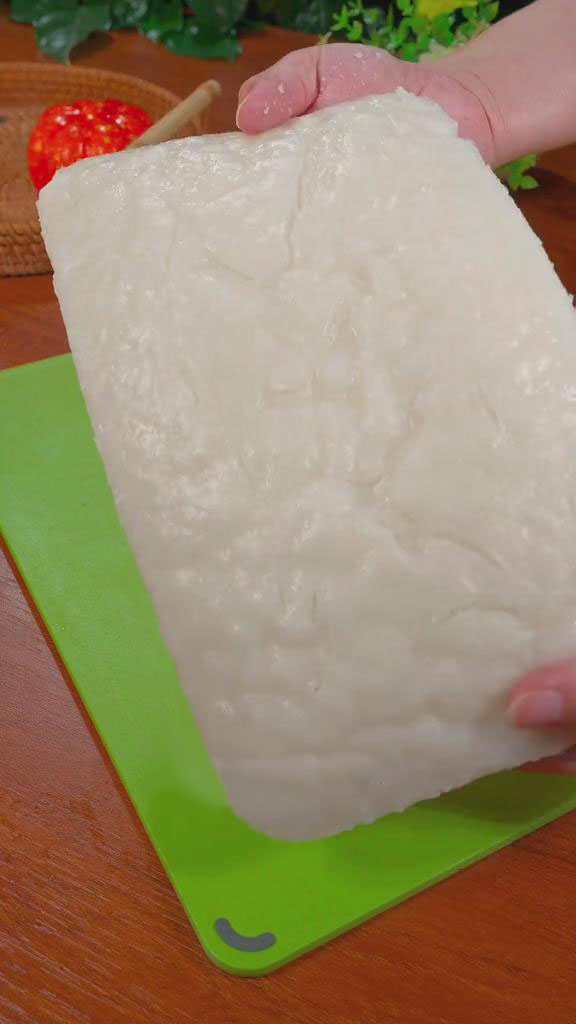
This cake is not made like your typical baked cakes and cookies. The recipe calls for fermenting the batter first before steaming it to make it moist and bouncy. It gets its white color from the white rice flour and white sugar and its spongy consistency from the activated yeast.
The taste is slightly sweet due to the added sugar, with a bit of sourness because of the fermented batter. The blend of rice flour and yeast is somewhat similar to sweet rice wine. It is the perfect subtle sweet treat for a sweet tooth.
4 Key Ingredients To Make Chinese Steamed Rice Cake
The secret to making the perfect steamed rice cake is following the ingredients carefully and precisely. Although alternatives are available for each, they will produce different results and won’t be as spongy and bouncy. First, let’s take a look at each ingredient.
Rice Flour
You’ll need rice flour to give the cake that stretchy and chewy texture. It is made from long or medium-grain white rice that is ground into fine flour powder. There are two types of rice flour: white rice flour and brown rice flour.
Both are generally interchangeable. However, should you use brown rice flour, I suggest combining it with brown sugar to create a brown sugar sponge cake instead of white. You may have come across “glutinous” rice flour, but this is not the same as rice flour.
Glutinous rice flour is also referred to as sweet rice flour or sweet rice powder. It is called “glutinous” because it creates a sticky consistency, similar to mochi and Chinese Pumpkin Cake (南瓜饼). Thus, you cannot use glutinous rice flour for this rice cake recipe since you want the chewy and bouncy texture achievable with rice flour.
Yeast
Yeast is a crucial ingredient in this recipe since it creates the cake’s spongy honeycomb texture. It is a common ingredient used to make baked goods rise when baking. Rising happens when the yeast comes in contact with the batter and produces carbon dioxide and ethanol.
It is different from baking soda or baking powder since it is a single-celled living microorganism. Because it is a living microorganism, it ferments and leavens the batter naturally.
One important thing you should know about yeast is that you need it alive to activate the rising process. The only way you will kill the yeast is when it is mixed with hot water at a temperature of 120°F to 140°F or higher. This temperature will kill the yeast, resulting in a solid cake that did not rise.
You will know the yeast is activated when the batter produces bubbles after fermenting for hours. If the bubbles don’t come out, it means the yeast is killed. So, make sure you mix the yeast with room-temperature water or less than 120°F at about 110°F.
White Sugar
Although you might want to skip this ingredient, you’ll need white sugar as part of the fermentation process with the yeast. It makes the fermentation process more effective and faster. Basically, yeast feeds on sugar.
The yeast converts the sugar into carbon dioxide and ethanol, which causes the cake to rise. Since the sugars are converted, the cake will only have a light sweetness to it. I recommend white granulated sugar to create the cake’s white color.
Water
The water is mixed with rice flour and sugar to create the batter. The batter is heated on medium-low heat until the mixture becomes thick and syrupy. Then, you’ll also need 30g of water to combine with 3g of yeast.
Remember that the heated batter should be cooled down first before mixing in the yeast mixture. If you mix the yeast mixture when the batter is still too hot, you risk killing the yeast and hindering the activation process.
Useful Tips When Making Chinese Steamed Rice Cake
Before giving this recipe a go, I suggest reading some of my foolproof tips to create a successful Chinese steamed rice cake. Aside from learning about the 4 ingredients, it is best that you are familiar with several factors that can affect the cooking process. From using the right pan to steaming it properly, here are some suggestions worth noting.
- Don‘t let the lid‘s moisture fall into the cake: When steaming the fermented batter, you’ll need to cover it with the lid. However, it is always a common problem when the moisture on the lid drips onto the cake. When this happens, the top of the cake becomes gummy or slimy, and it is just not the texture you want. So when you are taking the lid off, you’ll have to be careful not to let any water drip. You can also cover the lid with a towel so that the towel is the one absorbing the condensation. Alternatively, if you use a bamboo lid or bamboo steamer, the bamboo will absorb the moisture already.
- Adjust the steaming time depending on the container‘s size: You’ll have to decrease or increase the steaming time depending on the size of the container you use. The smaller the size, the shorter the steaming time. The best way to know if the cake is ready is to do the toothpick test. Simply insert a toothpick in the center of the cake and take it out. If the toothpick is clean without batter residue, the cake is cooked.
- Measure the ingredients using a kitchen scale: When it comes to baking, the amount of ingredients should be precise. If you use too much or too little or even just the slightest difference in grams, it can yield a different result. So, I recommend getting yourself a kitchen scale to get the exact amount of ingredients needed. Use a manual or digital kitchen scale to help you with your baking needs.
- Use a kitchen thermometer to measure heat: Since you want to be careful not to kill the yeast, use a kitchen thermometer to measure the temperature of the water and batter.
- Ferment at room temperature: Ideally, it should be fermented at room temperature. For winter, or if it is too cold in the room, you can let it ferment in an oven or microwave. Then, place a cup of boiled water next to it to keep the temperature warm. While fermenting, don’t forget to cover it with cling film, a plate, or the container’s lid.
- Serve while fresh and hot: The rice cake is most delicious when eaten fresh and hot. If you are not going to eat it right away, make sure it is covered to keep it moist and unexposed to air. Leaving it exposed to air will make it hard and lose its chewiness.
What You Need To Make Chinese Steamed Rice Cake
Having learned what the Chinese steamed rice cake recipe involves, you can begin preparing what you need. The kitchenware you need is for heating, fermenting, and steaming the batter. You will need the following items:
Kitchen Items
- Pot (to heat the batter)
- Whisk(to mix the batter)
- Heat-resistant mixing bowl (to heat and mix the batter)
- Cling film
- Steam-resistant container (to steam the batter)
- Steamer (Alternatively, improvise using a pan or pot with a lid, a steam-proof bowl, and a steamer stand)
- Knife and chopping board
Ingredients
Batter
- 200g rice flour
- 120g sugar
- 350ml water
Yeast Mixture
- 3g yeast
- 30g room-temperature water
How To Make Chinese Steamed Rice Cake
Are you all set? If yes, we can begin with the recipe instructions. In a nutshell, the recipe requires heating the batter, adding the yeast mixture, fermenting, and steaming. For the last step, you simply cut the firmed cake into your desired shape. Watch how the process goes with my short tutorial guide on Instagram and Tiktok.
Recipe Steps:
Prepare The Batter
- Add rice flour, sugar, and water in a bowl.
- Whisk until smooth. (The batter should be smooth and thin without any lumps.)
- Place the bowl in a pan with water and heat over medium-low fire for 5 minutes. Stir continuously.
- After heating, remove it from the pan and let it cool.
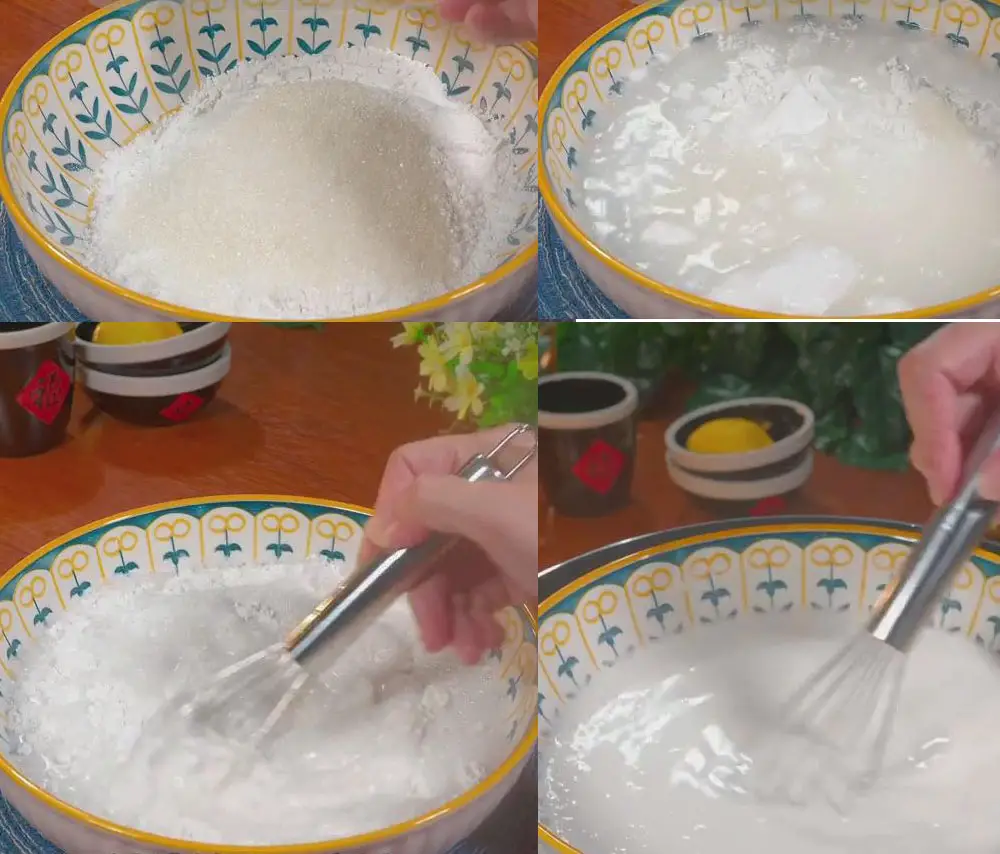

Activate The Fermentation Process
- Combine the yeast and water in a bowl and mix well.
- When the batter is cool, add the yeast mixture and mix well.
- Then, cover the bowl with a cling film.
- Let it ferment at room temperature for 1 to 2 hours until bubbles are formed.
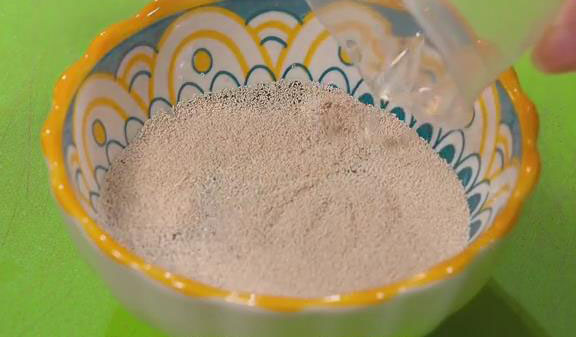
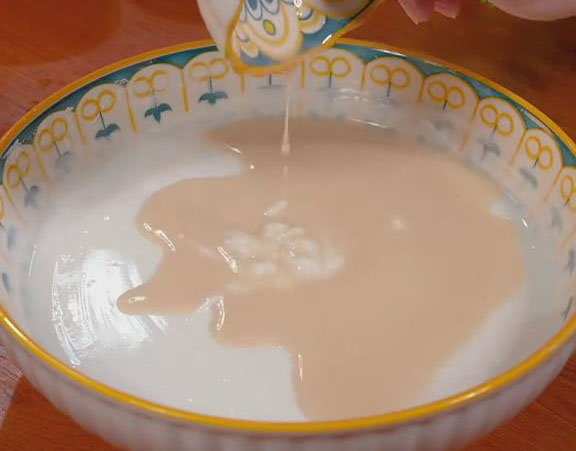
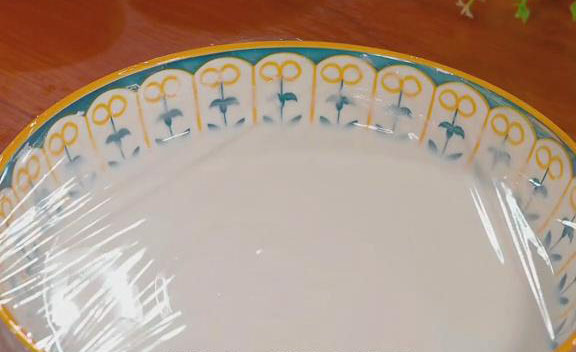
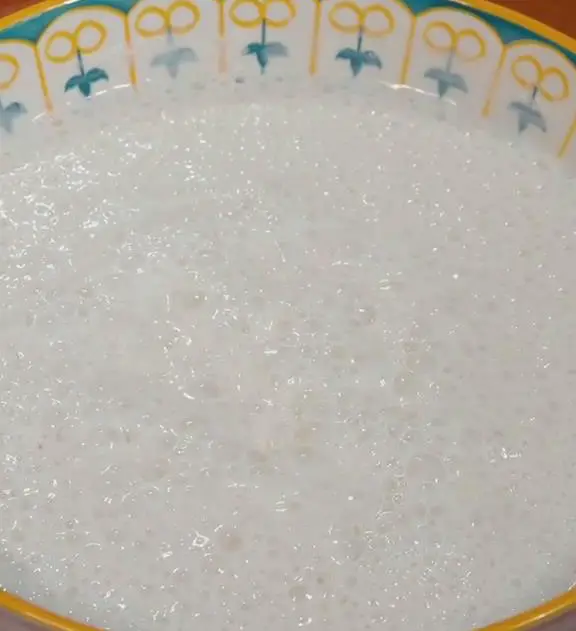
Steam The Batter
- Once the fermentation process is done, pour the batter into your chosen plate for steaming.
- Then, steam for 20 minutes on high heat. (The steaming time may depend on how thick the rice cake is. The thicker it is, the more time you need to cook. Use the toothpick test to know when it’s ready. DO NOT OVERCOOK or it will turn out dry and hard.)
- After steaming, allow it to cool completely.
- Lastly, cut the rice cake into your desired size and shape.
- Enjoy the sweet and chewy steamed rice cakes on any occasion.


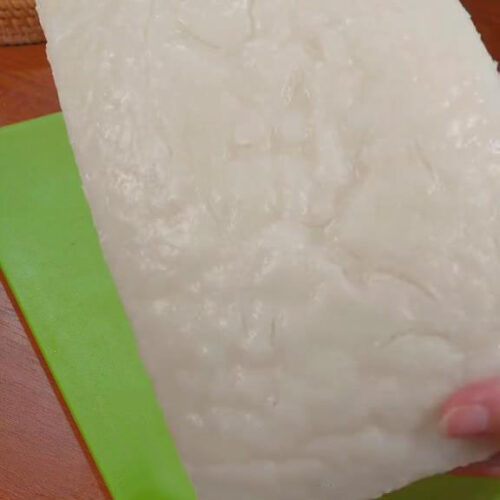
Chinese Steamed Rice Cake
Equipment
- Pot (to heat the batter)
- Whisk(to mix the batter)
- Heat-resistant mixing bowl (to heat and mix the batter)
- Cling film
- Steam-resistant container (to steam the batter)
- Steamer (Alternatively, improvise using a pan or pot with a lid, a steam-proof bowl, and a steamer stand)
- Knife and chopping board
Ingredients
Batter
- 200 g rice flour
- 120 g white sugar
- 350 ml water
Yeast Mixture
- 3 g yeast
- 30 g room-temperature water
Instructions
Prepare The Batter
- Add rice flour, sugar, and water in a bowl.
- Whisk until smooth. (The batter should be smooth and thin without any lumps.)
- Place the bowl in a pan with water and heat over medium-low fire for 5 minutes. Stir continuously.
- After heating, remove it from the pan and let it cool.
Activate The Fermentation Process
- Combine the yeast and water in a bowl and mix well.
- When the batter is cool, add the yeast mixture and mix well.
- Then, cover the bowl with a cling film.
- Let it ferment at room temperature for 1 to 2 hours until bubbles are formed.
Steam The Batter
- Once the fermentation process is done, pour the batter into your chosen plate for steaming.
- Then, steam for 20 minutes on high heat. (The steaming time may depend on how thick the rice cake is. The thicker it is, the more time you need to cook. Use the toothpick test to know when it's ready. DO NOT OVERCOOK or it will turn out dry and hard.)
- After steaming, allow it to cool completely.
- Lastly, cut the rice cake into your desired size and shape.
- Enjoy the sweet and chewy steamed rice cakes on any occasion.

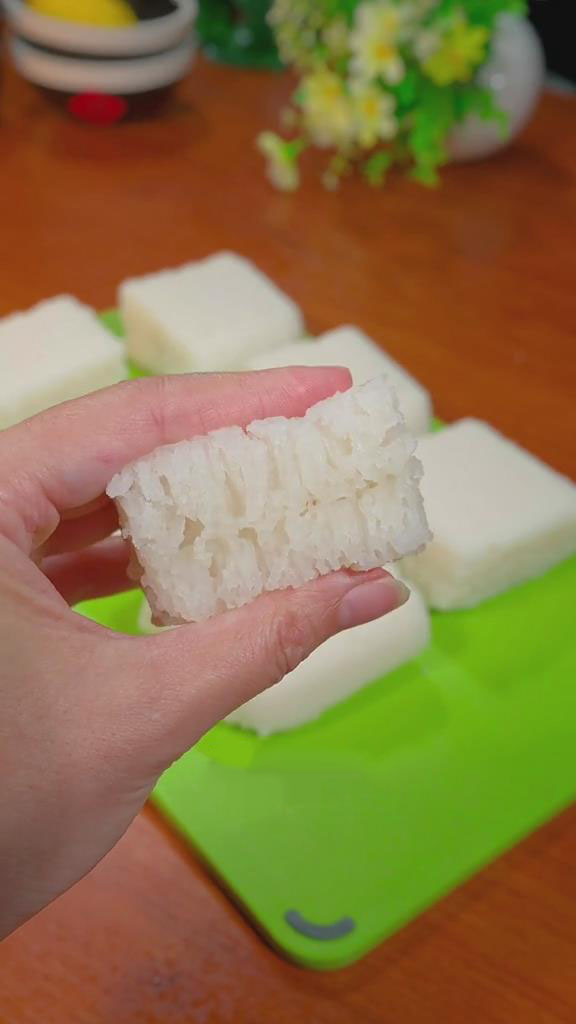
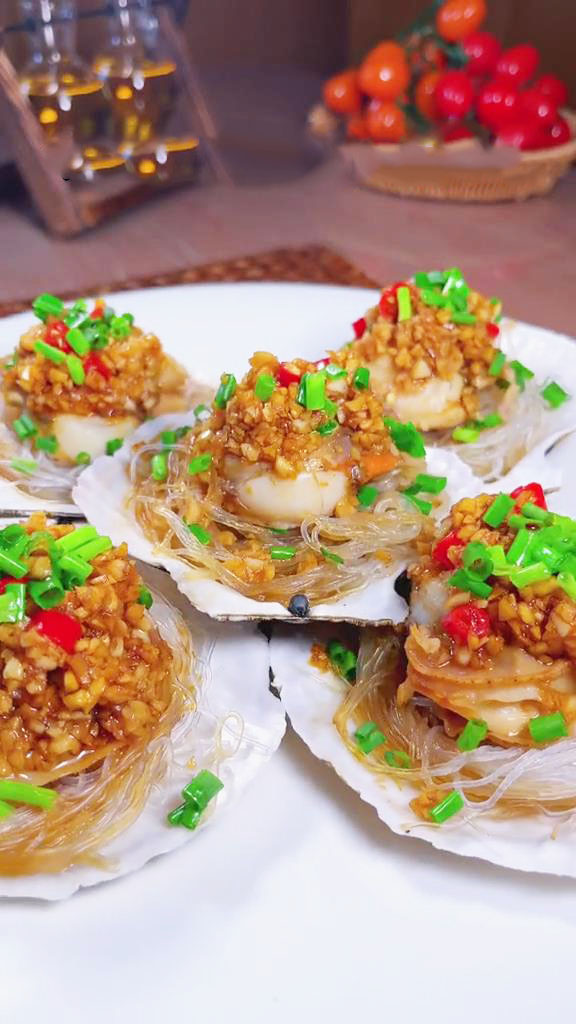
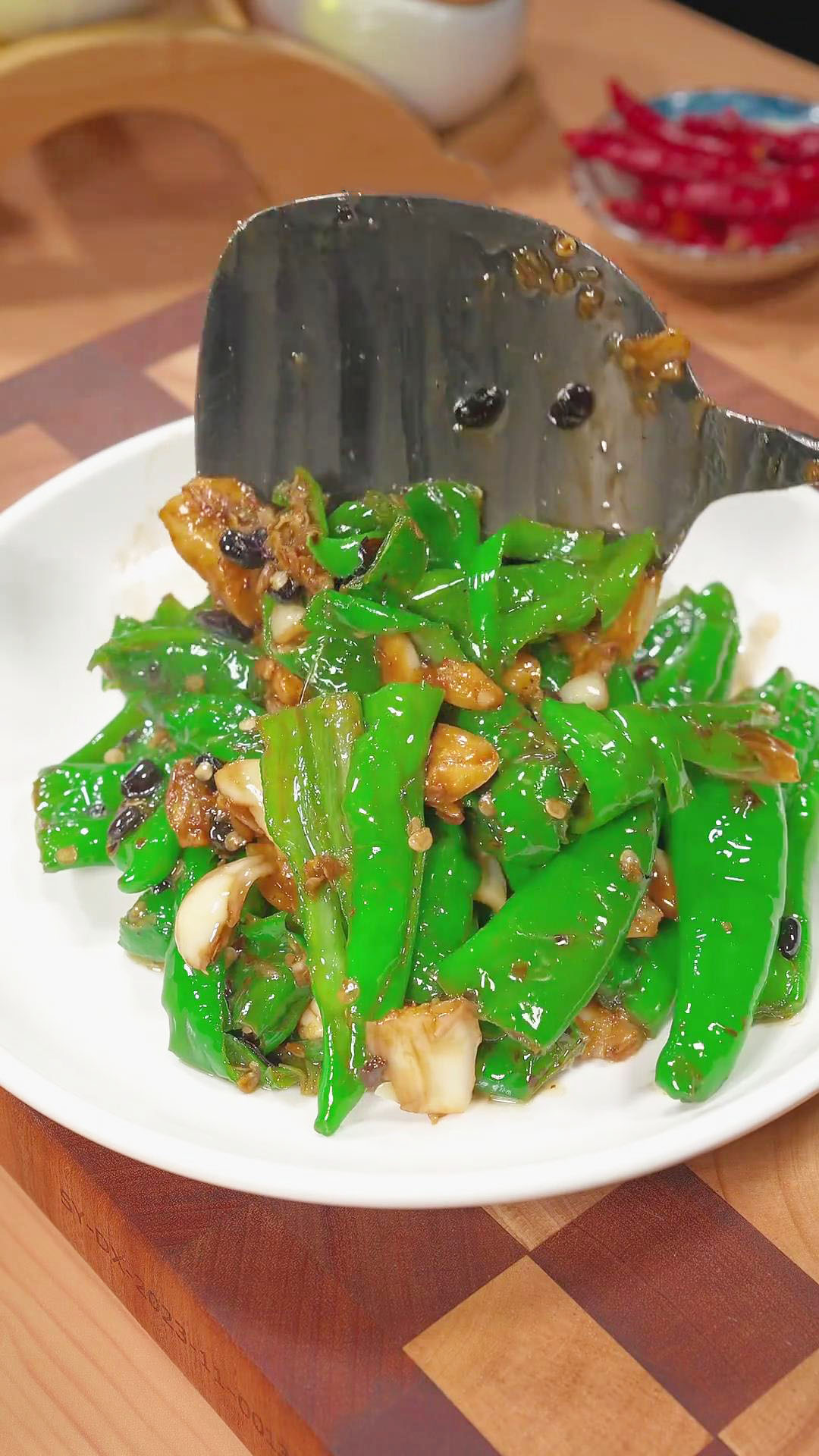
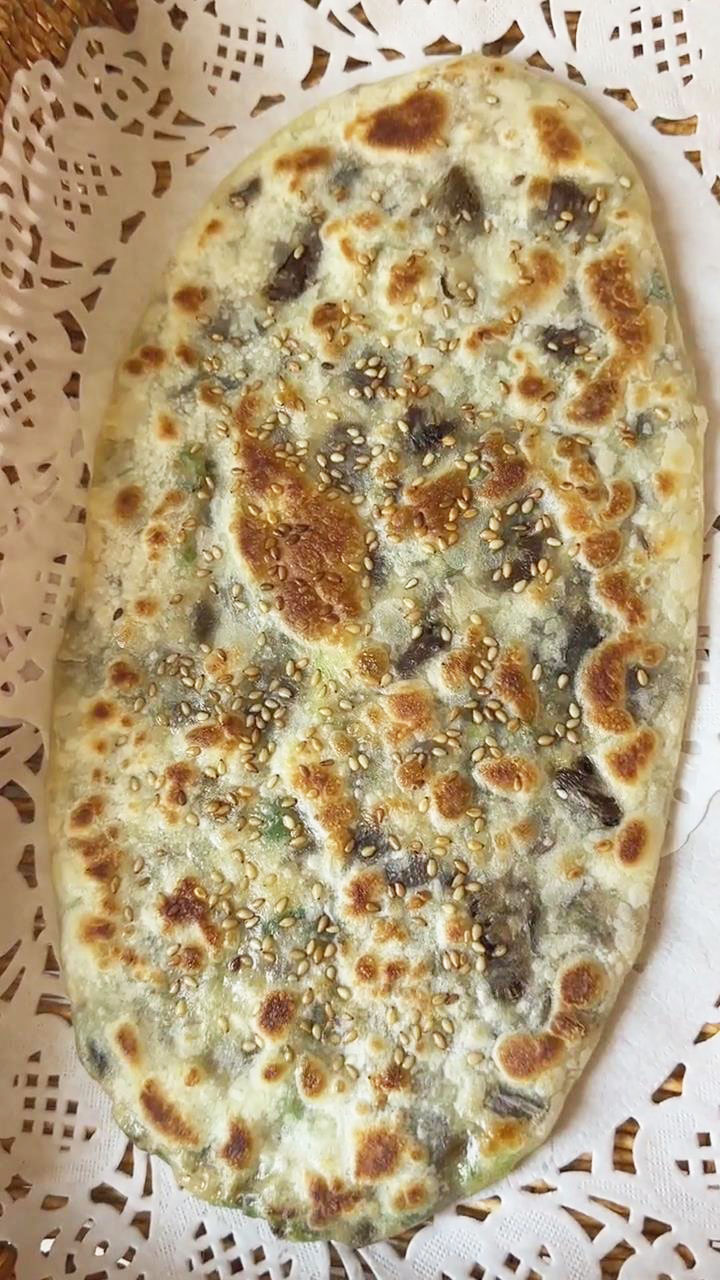
Mine came out gooey. I thought I followed the instructions properly, but maybe my conversion to cups/teaspoons were not exact. Please provide traditional measurements. Thank you.
Hello Antonio,
Sorry, I don’t frequently use cups or teaspoons to measure ingredients as they are not very accurate. The most precise method is to use a kitchen scale for measuring.